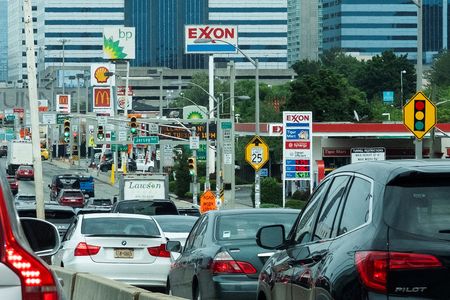
Investors will be crossing their fingers for a calmer inflation print from the United States, possibly allowing the Federal Reserve to go slower with its interest rate rises.
They are less concerned about Chinese inflation, focusing instead on what upcoming trade figures say about the economy. But high oil prices, spurred by supply squeezes, will keep policymakers on their toes, with central banks meeting in the euro zone and a range of emerging markets.
Here’s your look at the week ahead from Tom Westbrook in Singapore, Ira Iosebashvili in New York and Sujata Rao and Tommy Wilkes in London.
THE U.S. CONSUMER
Few pieces of U.S. economic data carry as much weight these days as consumer prices — so much so that Fed Chairman Jerome Powell and Treasury Secretary Janet Yellen both visited the White House in recent days to discuss the inflation issue.
So latest monthly figures due June 10 will show whether Fed policy tightening is beginning to chip away at the worst inflation in decades.
Analysts polled by Reuters forecast a 0.7% rise in May consumer prices. Prices rose 0.3% month-on-month in April, but that was down to gasoline prices calming after their March surge.
Markets rattled by worries over aggressive policy tightening, will be hoping for a benign May print that bolsters the case for a Fed rate hike pause later this year.
ECB UNDER PRICE PRESSURE
June 9 will probably mark the last meeting of the European Central Bank before it starts raising interest rates — for the first time in eleven years.
ECB policymakers are under pressure to show that their plan for gradual rate rises starting July will be sufficient to tame inflation, which hit a record 8.1% last month.
Consensus is for 25 basis-point rate rises in July and September, but some policymakers say 50 bps should be on the table at the July meeting.
Bigger hikes will be opposed by southern European countries, especially Italy, but markets will listen nonetheless for indications that policy may be tightened faster.
OIL-FLATION
The return of Chinese workers and motorists from lockdown should give fresh momentum to oil prices, which have risen 50% this year, impervious to data suggesting economic growth is starting to wilt.
Europe’s plan to slash Russian imports would cause a supply shortfall of up to 2 million barrels per day in the second half of 2022, ANZ analysts estimate. So OPEC+ producers’ decision to up output by an additional 216,000 bps in July and August has left markets unimpressed.
Running out of spare capacity, OPEC+ could struggle even to deliver that small increase. Brent, currently around $115 a barrel, is expected by analysts to average $101 over 2022, up almost $2 from April’s forecast.
Peak oil-flation is likely some way off.
OUT OF THE FIRE Shanghai’s lockdown has lifted, but a sense of dread lingers — after all, the two-month confinement of 25 million residents could happen elsewhere or be repeated in Shanghai if COVID makes a comeback. Damage to regional economies has been deep. Trade figures due on June 9 will quantify the hit to demand, and the cloud hanging over domestic and global growth. Inflation data a day later may be a welcome slow-and-steady outlier to the rest of the world. But it may not be a harbinger of more massive consumer-focused stimulus. Updated loan growth figures are due by mid-month. Like stocks and China’s currency, they have lately suggested confidence is hard to come by.
EMERGING TIGHTENING
Battered by inflation, China’s slowdown, dollar strength, Russia’s debt standoff and higher interest rates, emerging markets face a sharp slowdown in investment and GDP growth this year, the Institute of International Finance predicts.
But rate-hike campaigns show no sign of slowing, with Chile, Peru and Poland all expected to raise rates in coming days by between 25 and 75 bps.
India, following a surprise rate rise in May, will almost certainly continue tightening on June 8, with several policymakers urging a front-loading of rate hikes.
War-battered Ukraine jacked up rates to 25% to tackle double-digit inflation. But Russia, headed for recession and debt default, looks set to cut rates further after slashing them to 11% last month.
(Compiled by Sujata Rao; editing by Christina Fincher)

